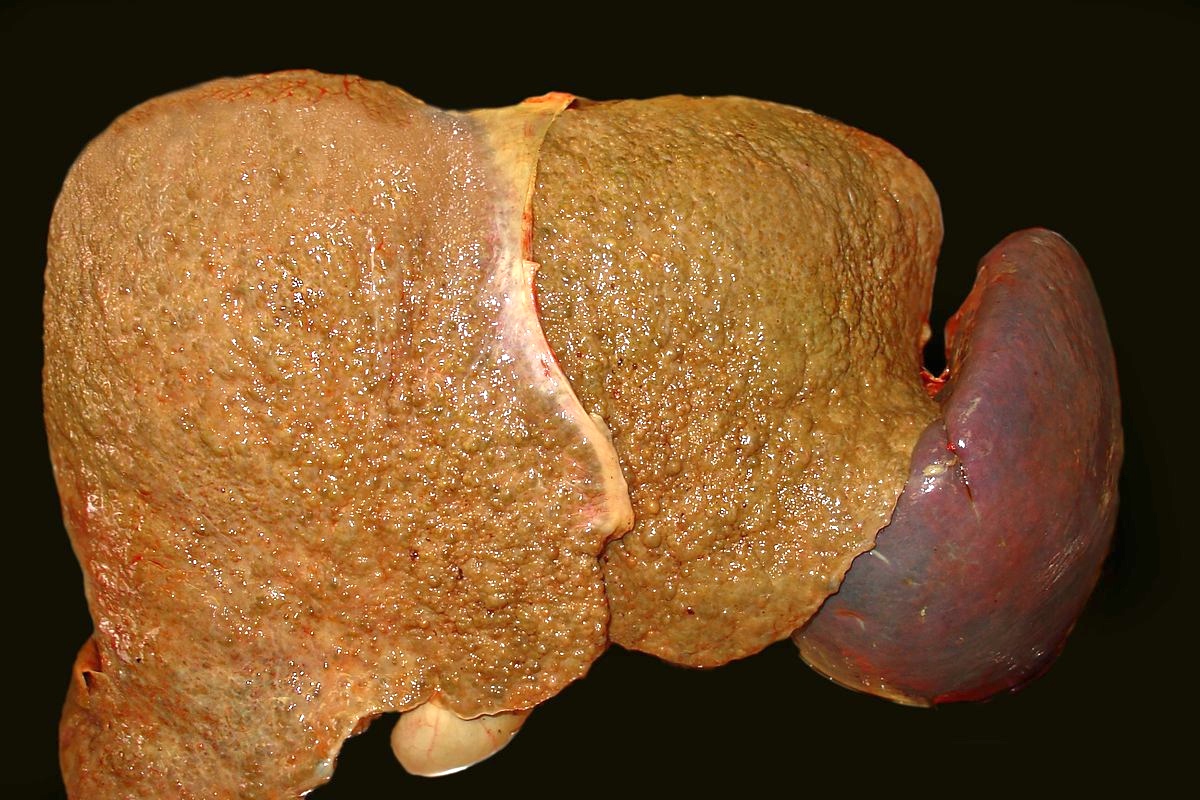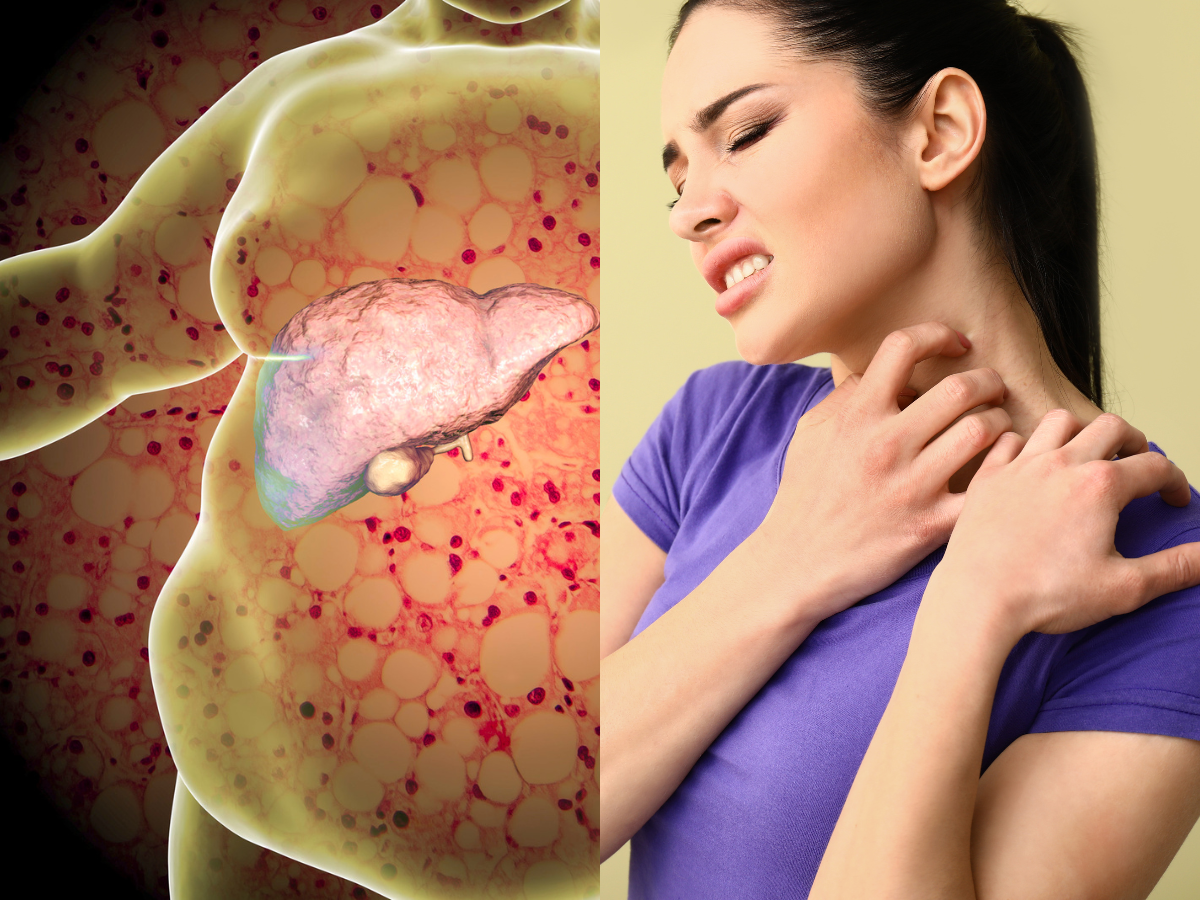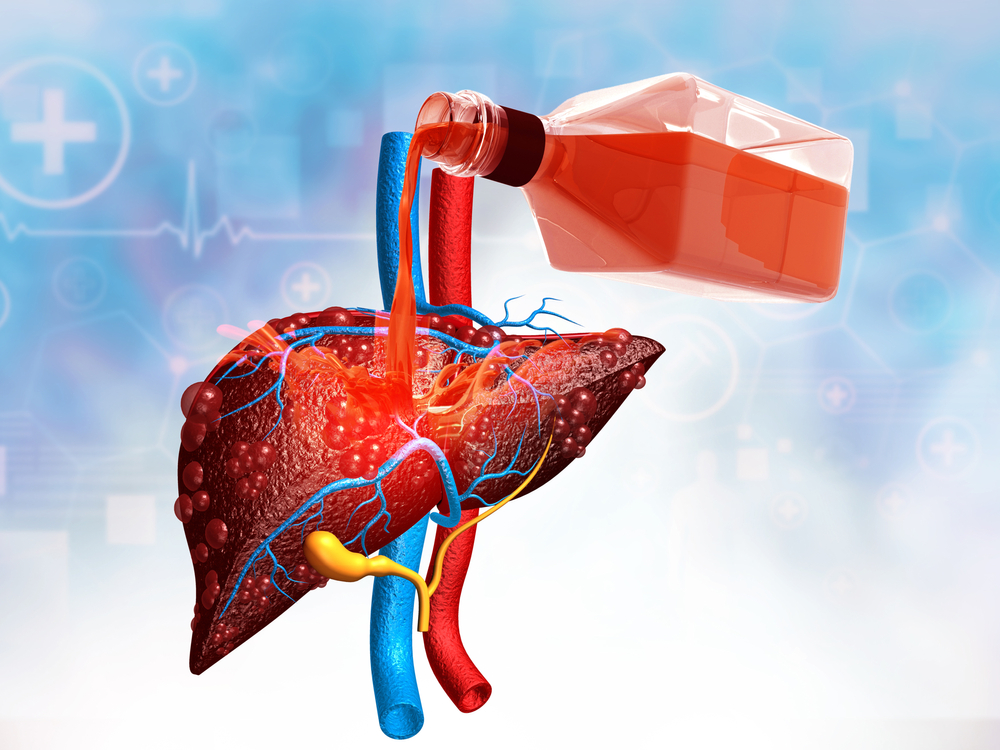Fatty liver or Steatotic liver disease (SLD) includes several conditions associated with steatosis in our liver. “Steatosis” is a term healthcare providers use to describe fat buildup in an organ (usually our liver).
A healthy, high-functioning liver contains a small amount of fat. Fat buildup becomes a problem when it reaches over 5% of your liver’s weight. Fatty liver disease is an access/abnormal accumulation of fat in the liver that may compromise the liver’s ability to filter out toxins from blood.
Faits impairs the liver’s ability to function. It is reversible in the early stages. However, if it progresses to cirrhosis, which is scarring of the liver, it is very difficult to reverse it, even with Homeopathic medicine it takes few months even a year or more required to control the situation.
Fatty liver disease is very common, and it affects approximately 20% people worldwide.
Fatty liver or Steatotic liver disease (SLD) can result from causes other than alcohol use or cardiometabolic risk factors. For example, various allopathic medications and diseases can cause steatosis. Sometimes, healthcare providers can’t identify a specific cause.
Fatty liver or Steatotic liver disease (SLD) without a clear cause is called cryptogenic SLD.
In most cases, the fat buildup doesn’t cause serious problems or prevent our liver from functioning normally. In some cases, the condition progresses to liver disease. It usually progresses in stages:
- Hepatitis: Our liver goes from fatty to inflamed (swollen). The inflammation damages tissue. This stage is called steatohepatitis. For example, this is what happens when MASLD becomes MASH.
- Fibrosis: Bands of scar tissue form where the inflammation damages our liver, causing it to stiffen. This process is called fibrosis.
- Cirrhosis: Extensive scar tissue replaces healthy tissue. At this point, a person has cirrhosis of the liver. Without treatment, cirrhosis can lead to potentially fatal conditions like liver failure and liver cancer. About 90% of people who develop hepatocellular carcinoma (HCC) — a type of liver cancer — have cirrhosis.
There are two kinds of fatty liver disease:
Nonalcoholic fatty liver disease and alcoholic fatty liver disease.
Alcoholic: is associated with alcohol use (also known as alcoholic steatohepatitis) and one is not (nonalcoholic fatty liver disease).
Nonalcoholic fatty liver disease (NAFLD) usually does not cause any symptoms. Most people do not know that they have it. But if the condition worsens it damages the liver from inflammation and may lead to scarring (cirrhosis). This is known as nonalcoholic steatohepatitis (NASH). People who suffer from diabetes or who are overweight or obese are more likely to suffer from NASH.
Who Gets NAFLD
Certain conditions increase the risk of Non-Alcoholic Fatty Liver Disease, for example, People who are overweight or obese are more likely to get it, even children can develop Non-Alcoholic Fatty Liver Disease. Approximately 12.5 percent of kids around the world have the condition.
Ethnicity is related to risk as well. Non-Alcoholic Fatty Liver Disease is more common in USAs, Europe, and Russia and people who are Hispanic and Caucasian and is less common in African. People who are Asian European are more likely to develop Non-Alcoholic Fatty Liver Disease compared to those of other ethnicities when they are at a normal weight.
Alcoholic Fatty Liver Disease 
Alcoholic fatty liver disease occurs in long-term hard drinkers. People who are obese, female, and those who have certain gene mutations are more likely to get it. People who have the fatty liver and continue drinking increase their risk of future cirrhosis, alcoholic hepatitis, liver failure and liver cancer.
Symptoms
Many people who suffer from fatty liver do not know they have it because they don’t experience any symptoms. When they do experience symptoms, they may include loss of appetite, weight loss, abdominal fullness, abdominal pain, fatigue, confusion, weakness, and nausea. Signs of fatty liver that may be apparent to others include a yellowing of the skin and eyes (jaundice) and swelling of the legs and abdomen (edema).
Diagnosis of Fatty Liver
Fatty liver disease may be hard to diagnose because of not have any symptoms. Tests the doctor may order if they suspect a patient has fatty liver include blood tests to monitor for elevated liver enzymes, ultrasound, and computed tomography (CT) scan. Elastography is a test that helps assess the level of fat and scarring in the liver. In some cases, the doctor should take a sample of liver tissue (liver biopsy) to diagnose fatty liver disease. Fibro scan (to learn the amount of fat and scar tissue in the liver).
Allopathic Treatment for Fatty Liver
There’s no specific treatment or medications for fatty liver in allopathic medicine.
Instead, allopathic doctors focus on helping their patients to manage risk factors that contribute to the condition. This includes making lifestyle changes that can improve patient’s health.
An allopathic doctor may recommend that:
- Avoid alcohol: Steer clear of alcohol even if your SLD isn’t related to alcohol use.
- Lose weight: Exercising, changing what you eat and drink (under the supervision of a nutritionist) and taking medications, such as GLP1RA, can help with weight loss. You may qualify for bariatric surgery, which can also help you lose weight.
- Take medications to manage metabolic conditions: Take prescribed medicines to manage diabetes, cholesterol and triglycerides (fat in the blood). Patient may also need to take vitamin E and thiazolidinediones (drugs used to treat diabetes) in specific instances.
- Get vaccinated for hepatitis A and hepatitis B: These viral infections are especially dangerous if patient is already having liver disease.
An allopathic doctor may change patient’s prescriptions if medicine is causing fat to accumulate in patient’s liver.
Homeopathic Treatment for Fatty Liver
There are lot of patients can do with diet and lifestyle changes to treat a fatty liver. Losing weight if they are overweight or obese may help the liver.
An Allopathic doctor can also prescribe certain drugs to treat inflammation and help keep blood sugar under control, and that’s all; no best treatment for fatty liver in allopathic drugs; Here we will prescribe Homeopathic medicine, they give almost 95+% successful results (health).
Here are few proven Homeopathic medicines for fatty liver:
Chelidonium Majus 
A prominent liver remedy, jaundice, pain under right scapula, Jaundice due to hepatic and gallbladder obstruction. Gall-colic. Distention. Fermentation and sluggish bowels. Constriction across, as by a string. Liver enlarged. Gallstones. Tongue yellow, with imprint of teeth; large and flabby. Taste bitter, pasty. Bad odor from mouth.
Constipation; stools hard, round balls, like sheep’s dung, bright yellow, pasty; clay-colored, stools float in water; alternation of diarrhea and constipation. Burning and itching of anus.
Urine: Profuse, foaming, yellow urine, like beer (Chenop) dark, turbid.
Pain in arms, shoulders, hands, tips of fingers. Icy coldness of tips of fingers; wrists sore, tearing in metacarpal bones. Whole flesh sore to touch. Rheumatic pain in hips and thighs; intolerable pains in heels.
Skin: Dry heat of skin; itches, yellow. Painful red pimples and pustules. Old, spreading, offensive ulcers. Wilted skin. Sallow, cold, clammy.
Lycopodium Clavatum
Lycopodium is adapted more especially to ailments gradually developing, functional power weakening, with failures of the digestive powers. The function of the liver is seriously disturbed. Atony. Malnutrition. Mild temperaments of lymphatic constitution, with catarrhal tendencies; older persons, the skin shows yellowish spots, earthy complexion, uric acid diathesis. Deep-seated, progressive, chronic diseases. Carcinoma. Emaciation. Ascites, in liver disease. Dropsy, due to hepatic disease. Hepatitis, atrophic from of nutmeg liver. Abscesses beneath skin; worse warm applications. Hives; worse, warmth. Violent itching; fissured eruptions. Acne. Chronic eczema associated with urinary, gastric and hepatic disorders, bleeds easily. Skin becomes thick and indurated. Varicose veins, naevi, erectile tumors. Brown spots, freckles. Viscid and offensive perspiration, especially of feet and axilla.
Phosphorus
Feels cold. Sharp, cutting pains. A very weak, empty, gone sensation felt in whole abdominal cavity. Liver congested. Acute hepatitis. Fatty degeneration (Carbon tetrachloride; Ars. Chlorof). Jaundice. Pancreatic disease. Large, yellow spots on abdomen. Hunger soon after eating. Sour taste and sour eructation after every meal. Belching large quantities of wind, after eating. Throws up ingesta by the mouthfuls. Vomiting: water is thrown up as soon as it gets warm in the stomach. Tibia inflamed and became necrosed. Arms and hands become numb. Can lie only on right side. Post-diphtheritic paralysis, with formication of hands and feet. Joints suddenly give way.
Stool: Very fetid stools and flatus. Long, narrow, hard, like a dog’s. Difficult to expel. Desire for stool on lying on, left side. Painless, copious debilitating diarrhea. Green mucus with grains like sago. Involuntary; seems as if anus remained open. Great weakness after stool. Discharge of blood from rectum, during stool. White, hard stools. Bleeding hemorrhoids.
Urine: Hematuria, especially in acute Bright’s disease. Turbid, brown, with red sediment.
Fever: Chilly every evening. Cold knees at night. Adynamic with lack of thirst, but unnatural hunger. Hectic, with small, quick pulse; viscid night-sweats. Stupid delirium. Profuse perspiration.
Skin: Wounds bleed very much, even if small; they heal and break out again. Jaundice. Little ulcer outside of large ones. Petechiae. Ecchymosis. Purpura hemorrhagic. Scurvy. Fungous hematodes and excrescences.
Floric Acidum 
Alcoholism. Cicatrix. Coccygodynia. Decubitus. Dropsies. Fistula. Gleet. Goiter. Gonorrhea. Hemorrhoids. Hair, falling out. Hands perspiration. Headache. Hydrocele. Liver induration. Locomotor ataxy. Naevus. Nymphomania. Peritonitis. Perspiration. Pityriasis. Satyriasis. Spleen diseases. Suppuration. Syphilis. Teeth defective. Toothache. Tongue ulcers. Varicose. Whitlow. Bones necrosis. Red blotches on body which tend to desquamate. Frequent eructation. Nausea, eructation and lassitude. Bilious vomiting. Frequent passages of flatus and belching. Great tension and dropsical swelling of the abdomen. Pinching in the region of the spleen (extending to the hips). Pressing pain in the region of the spleen. Sensation of emptiness in the region of the navel. Watery stools in the morning. Burning pains on small spots of the skin. Itching of the skin. Elevated red blotches. Red, round, elevated blood vesicles.
Cardus Marianus
Soreness, pain, jaundice. Has specific relation to the vascular system. Abuse of alcoholic beverages, especially beer. Varicose veins and ulcers. Dropsical conditions depending on liver disease, and when due to pelvic congestion and hepatic disease. Disturbs sugar metabolism. Appetite small; tongue furred; nausea; retching; vomiting of green, acid fluid. Gallstone disease with enlarged liver. Swelling of gall bladder with painful tenderness. Hyperaemia of liver, with jaundice. Cirrhosis, with dropsy.
Myrica Cerifera
Persistent sleeplessness. Jaundice with bronze-yellow skin. Face yellow, Itching and stinging. Creeping sensation. Tongue furred, with bad taste in mouth, and nausea. Tenacious, thick, nauseous secretion. Taste bitter and nauseous, with offensive breath. Complete loss appetite. Scanty, yellow, frothy urine.
Arsenicum Album
Ailments from alcoholism. Anemia and chlorosis. Degenerative changes. Skin within, raw and burning. Face swollen, pale, yellow, cachectic, sunken, cold, and covered with sweat. Tongue dry, clean, and red; stitching and burning pain in tongue, ulcerated with blue color. Long-lasting eructation. Vomiting of blood, bile, green mucus or brown-black mixed with blood. Liver and spleen enlarged and painful. Ascites and anasarca. Abdomen swollen and painful. Stool small, offensive, dark, with much prostration. Alcoholic abuse, spoiled meat. Dysentery dark, bloody very offensive.
Apocynum Androsaemifolium
Diarrhea. Dropsy. Nausea. Neuralgia of face. Vomiting. Wandering rheumatism. Worms. Trembling of the body. Prostration and trembling. Swollen sensations of face and body. Swelling of hands and feet; showing its relation to dropsical states. Heaviness with great desire to sleep. Flying pains in different parts. Itching of body and face. Acute rheumatism with great stiffness. General rheumatic pains. Profuse sweat of whole body. Acute pains in the joints attended with cramps, bilious stools and flying pains in the teeth. Renal calculi and gravel. Pains and stiffness in back of head and neck.
Everything smelled like honey. Twitching in face. Violent pain in zygoma. Pains in all teeth of lower jaw. Most delightful taste in the mouth. Vomiting and purging. Shooting pain in left groin. Constipation.
Profuse flow of clear urine. Profuse menstruation lasting eight days with violent pressing pain. Swelling of hands and feet. Most violent pains in all the joints. Much pain in knee and shoulder. Cramps and burning in soles. Severe pain in knees.
Nux vomica
Bruised soreness of abdominal walls (Apis; Sulph). Flatulent distension, with spasmodic colic. Colic from uncovering. Liver engorged, with stitches and soreness. Colic, with upward pressure, causing short breath, and desire for stool. Sour taste, and nausea in the morning, after eating. Weight and pain in stomach; worse, eating, Sour, bitter eructation. Nausea and vomiting.
Constipation, with frequent ineffectual urging, incomplete and unsatisfactory; feeling as if part remained unexcelled. Alternate constipation and diarrhea-after abuse of purgatives. Urging to stool felt throughout abdomen. Itching, blind hemorrhoids, with ineffectual urging to stool; very painful; after drastic drugs. Diarrhea after a debauch; worse, morning. Frequent small evacuations. Scanty stool, with much urging. Dysentery: stools relieve pains for a time. Constant uneasiness in rectum. Diarrhea, with jaundice.
Skin: Body burning hot, especially face; yet cannot move or uncover without feeling chilly. Urticaria, with gastric derangement. Acne; skin red and blotchy.
Fever: Cold stage predominates. Paroxysms anticipate in morning. Excessive rigor, with blueness of fingernails. Aching in limbs and back, and gastric symptoms. Chilly; must be covered in every stage of fever. Perspiration sour; only one side of body. Chilliness on being uncovered, yet he does not allow being covered. Dry heat of the body.
Calcaria Carbonicum
This great Hahnemannian anti-psoric is a constitutional remedy par excellence. Its chief action is centered in the vegetative sphere, impaired nutrition being the keynote of its action, the glands, skin, and bones, being instrumental in the changes wrought. Increased local and general perspiration, swelling of glands, scrofulous and rachitic conditions,
craving for indigestible things-chalk, coal, pencils; also, for eggs, salt and sweets. Milk disagrees. Frequent sour eructation; sour vomiting. Dislike of fat. Loss of appetite when overworked. Heartburn and loud belching. Cramps in stomach; worse, pressure, cold water. Ravenous hunger. Swelling over pit of stomach, like a saucer turned bottom up. Repugnance to hot food. Pain in epigastric region to touch. Thirst; longing for cold drinks. Aggravation while eating. Hyperchlorhydria. Pain between shoulder-blades, impeding breathing. Cold knees cramps in calves. Sour foot-sweat. Weakness of extremities. Swelling of joints, especially knee. Burning of soles of feet. Fever with sweat. Pulse full and frequent. Chilliness and heat. Partial sweats. Night sweats, especially on head, neck and chest. Hectic fever.
Abdomen sensitive to slightest pressure. Liver region painful when stooping. Cutting in abdomen; swollen abdomen. Incarcerated flatulence. Inguinal and mesenteric glands swollen and painful. Cannot bear tight clothing around the waist. Distention with hardness. Gall-stone colic. Increase of fat in abdomen. Umbilical hernia. Trembling; weakness, as if sprained. Children are late in learning to walk.
Stool: Crawling and constriction in rectum. Stool large and hard; whitish, watery, sour. Prolapse ani, and burning, stinging hemorrhoids. Diarrhea of undigested, food, fetid, with ravenous appetite. Children’s diarrhea. Constipation; stool at first hard, then pasty, then liquid.
Urine: Dark, brown, sour, fetid, abundant, with white sediment, bloody. Irritable bladder. Enuresis.
Skin: Unhealthy; readily ulcerating; flaccid. Small wounds do not heal readily. Glands swollen. Nettle rash; better in cold air. Warts on face and hands. Petechial eruptions. Chilblains. Boils.
Cholesterinum
Cancer of the liver. Obstinate hepatic engorgements. Burning pain inside; on walking holds his hand on side, hurts him so. Opacities of the vitreous. Jaundice; gallstones.
Cholesterine is the physiological opponent of Lecithin. Both seem to play role in the growth of tumors. Gallstones and insomnia.
P. S: This article is only for doctors having good knowledge about Homeopathy and allopathy, for learning purpose(s).
For proper consultation and treatment, please visit our clinic.
None of above-mentioned medicine(s) is/are the full/complete treatment, but just hints for treatment; every patient has his/her own constitutional medicine.
To order medicine by courier, please send your details at WhatsApp– +923119884588
 Dr. Sayyad Qaisar Ahmed (MD {Ukraine}, DHMS), Abdominal Surgeries, Oncological surgeries, Gastroenterologist, Specialist Homeopathic Medicines.
Dr. Sayyad Qaisar Ahmed (MD {Ukraine}, DHMS), Abdominal Surgeries, Oncological surgeries, Gastroenterologist, Specialist Homeopathic Medicines.
Senior research officer at Dnepropetrovsk state medical academy Ukraine.
Location: Al-Haytham clinic, Umer Farooq Chowk Risalpur Sadder (0923631023, 03119884588), K.P.K, Pakistan.
Find more about Dr Sayed Qaisar Ahmed at:
https://www.youtube.com/Dr Qaisar Ahmed
https://www.facebook.com/ahmed drqaisar

I came across your site wanting to learn more and you did not disappoint. Keep up the terrific work, and just so you know, I have bookmarked your page to stay in the loop of your future posts. Have a wonderful day!
I have recently started a blog, the info you provide on this web site has helped me greatly. Thanks for all of your time & work.
I am really inspired with your writing abilities and also with the layout in your blog. Is this a paid subject matter or did you customize it yourself? Either way stay up the excellent quality writing, it’s uncommon to look a nice blog like this one these days!
I think you have remarked some very interesting points, thankyou for the post.
Hi! This post could not be written any better! Reading through this post reminds me of my previous room mate! He always kept chatting about this. I will forward this post to him. Fairly certain he will have a good read. Thank you for sharing!
Does your blog have a contact page? I’m having problems locating it but, I’d like to send you an email. I’ve got some creative ideas for your blog you might be interested in hearing. Either way, great website and I look forward to seeing it expand over time.
Very fantastic visual appeal on this website , I’d rate it 10 10.
Nice post. I was checking continuously this blog and I am impressed! Very useful info specially the ultimate part 🙂 I take care of such info a lot. I used to be looking for this certain info for a long time. Thanks and good luck.